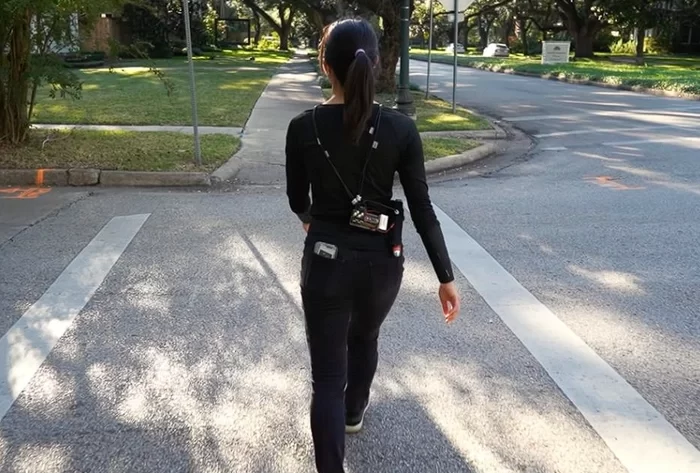In a world where sight and hearing are constantly bombarded with information, the sense of touch remains largely untapped. However, a team of engineers at Rice University is set to change that with their innovative wearable, textile-based device. This groundbreaking technology, which uses air to provide directions and pneumatic haptic feedback, is poised to revolutionize the way we interact with our personal devices.
The lead author of the study, Barclay Jumet, a mechanical engineering PhD student, noted that technology has been slow to incorporate haptics, a communication method based on the sense of touch. Existing wearable devices that have incorporated haptics often require bulky external hardware to provide complex cues, limiting their use in everyday activities.
However, the system developed by the Rice labs of Daniel Preston and Marcia O’Malley has managed to circumvent this issue. By programming haptic cues into the textile structure of the wearables using fluidic control, they have significantly reduced the need for external hardware. This innovative approach builds on previous work and has resulted in the creation of smart fabric that uses air to provide directions and pneumatic haptic feedback, a concept they refer to as point force cues.
Smart fabric uses air pressure to provide directions
Other articles you may find of interest on the subject of haptic feedback :
The technology is embedded in wearable textiles and uses the sensation of touch to convey information. The control responsive abilities are offloaded within the textile sheets themselves, using pressurized air instead of electronics. This makes the wearable haptic devices not only capable of providing directional guidance but also of enriching a haptic experience.
The textile-based systems are as comfortable as a piece of clothing, with the haptic cues created organically within the materials used. The design parameters of the device can be manipulated to create a wide range of different haptic experiences.
The potential applications of this technology are vast. It could benefit over a billion people with a loss of vision or hearing by providing a third sense of communication through touch. Moreover, it could enhance various avenues of entertainment, such as gaming, music, movies, and augmented or virtual reality by incorporating haptic touch.
The system was tested in a lab with almost 90% accuracy for all responders on average. It was then taken to the streets of Houston, where a user was able to navigate nearly a mile on foot and on a scooter. The textile approach to making wearable devices allows for rapid fabrication and prototyping, enabling quick iteration of ideas.
In conclusion, the development of this smart fabric that uses air to provide directions and pneumatic haptic feedback is a significant step forward in the field of wearable technology. It not only offers a new way to communicate but also opens up a world of possibilities for enhancing our sensory experiences.
Other projects using haptic feedback :
Source: AB
Filed Under: Design News, Top News
Latest Aboutworldnews Deals
Disclosure: Some of our articles include affiliate links. If you buy something through one of these links, Aboutworldnews may earn an affiliate commission. Learn about our Disclosure Policy.







